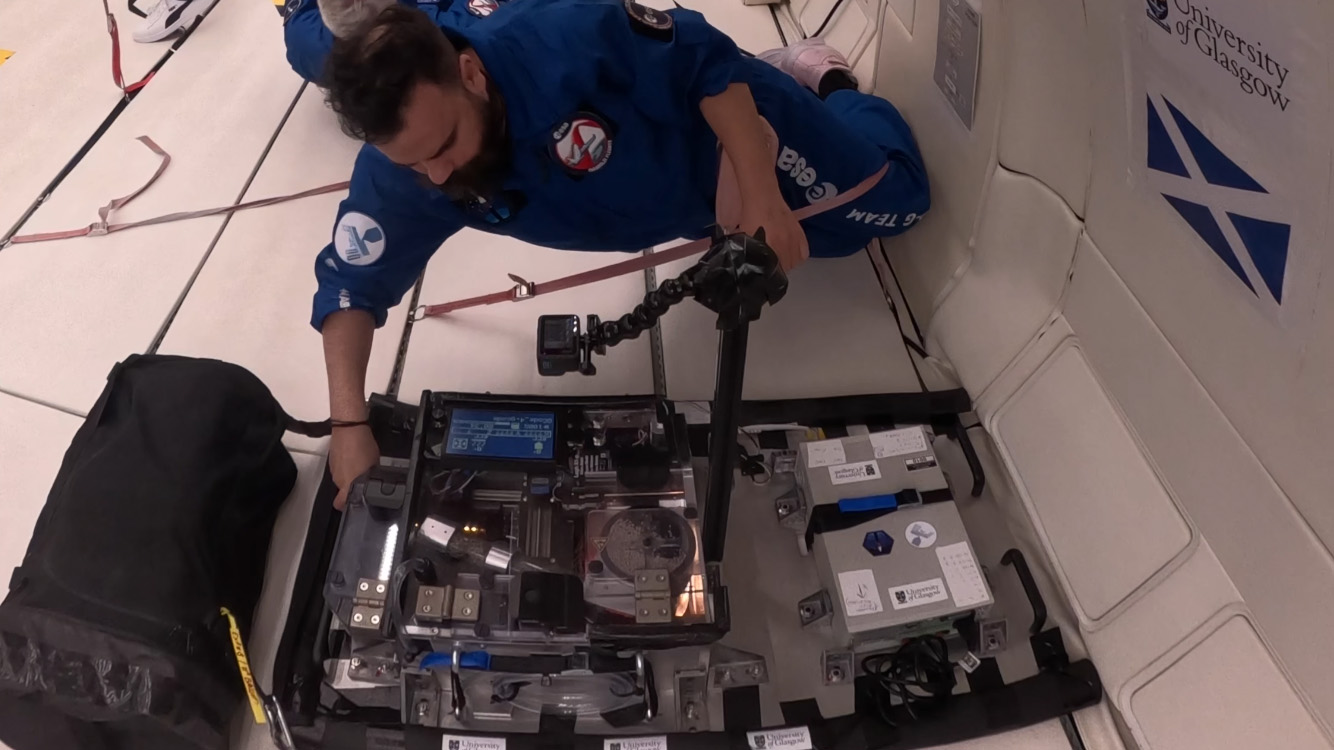Researchers build a 3D printer optimized for space applications — Designed to work in a vacuum, the printer could be used to rapidly prototype components while in space

Dr. Gilles Bailet and his team at James Watt School of Engineering at the University of Glasgow received a patent for a prototype 3D printer that has been tested to work in zero gravity. Aside from that, this system is also designed to work in the vacuum of space, allowing for its use outside of spacecraft and space stations. According to the University of Glasgow, the research team has taken the kit on three test flights that allowed for more than 90 22-second periods of weightlessness, allowing them to test how it works in microgravity.
3D printers were first used in orbit in 2014, which allowed the astronauts onboard the International Space Station (ISS) to print plastic parts and tools as required. Just last year, the European Space Agency launched a metal 3D printer and is currently testing it on the ISS to see how microgravity affects printing metal parts. However, all this equipment is designed to be used within the ISS’s modules, which are pressurized at around the same level as here on Earth.
“Additive manufacturing, or 3D printing, is capable of producing remarkably complex materials quickly and at low cost,” Dr. Bailet said. “However, what works well here on Earth is often less robust in the vacuum of space, and 3D printing has never been done outside of the pressurized modules of the International Space Station. The filaments in conventional 3D printers often break or ham in microgravity and in vacuum, which is a problem that needs to be solved before they can be reliably used in space.”
Instead of using the typical filament used in most Earth-bound 3D printers, Dr. Bailet and his team created a granular material that can easily be drawn into the 3D printer’s feedstock tank and into the nozzle faster than other materials. Using this kind of material will also prevent filament breaks or jamming, allowing it to work more reliably and require less supervision.
Aside from producing tools and spacecraft parts in orbit, the team also envisioned printing other objects that could deliver groundbreaking advancements on land. This includes the space reflectors, which could gather solar energy in orbit and reflect it onto a ground station, allowing for a 24-hour solar power plant. Dr. Bailet also talked about using it to produce pharmaceutical products that are far more effective than what we have right now.
“Crystals grown in space are often larger and more well-ordered than those made on Earth, so orbital chemical factories could produce new or improved drugs for delivery back to the surface,” says Dr. Bailet. “It has been suggested, for example, that insulin grown in space could be nine times more effective, allowing diabetic people to inject it once every three days instead of three times a day, as they often have to do today.”
If proven effective, this 3D printer could allow astronauts to start printing larger objects outside of the ISS. This could revolutionize space travel, as fragile and bulky objects could be printed in space instead of being put on giant rockets and blasted up from the surface. If and when we go back to the moon, this tech will simplify moon-bound manufacturing, and we might soon be launching rockets toward Mars from our natural satellite instead.
Get Tom's Hardware's best news and in-depth reviews, straight to your inbox.

Jowi Morales is a tech enthusiast with years of experience working in the industry. He’s been writing with several tech publications since 2021, where he’s been interested in tech hardware and consumer electronics.